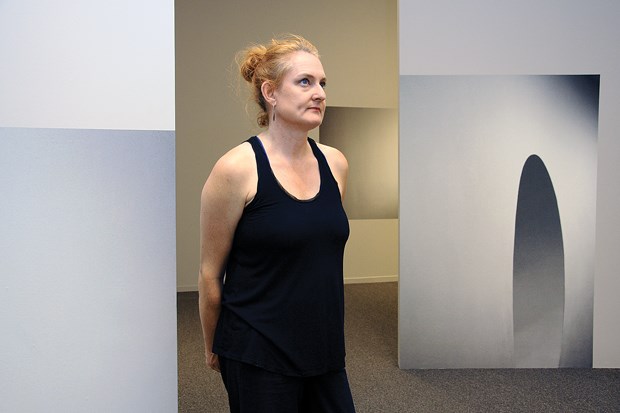Kelly Lyman: Underglow, Presentation House Gallery. Opening reception: Friday, Sept. 12 at 7 p.m.
There's wall to wall art at Presentation House Gallery this fall.
The gallery is hot and teeming with workers just a few days before the opening of a new installation that offers viewers a chance to experience one of New York's most influential art salons.
Painters are applying the precise shade of blue to burlap walls and the waiting wainscoting while the placement of lights and ledges is meticulously planned in an attempt to create a vision of a version of Gallery 291.
In the days before the First World War, Gallery 291 was the first and in some cases the only place in North America to see the work of European artists like Rodin, Picasso and Cézanne.
The small salon disappeared from the New York art world in 1917 but curious esthetes who've wondered what it might be like to tread on its hardwood floors can experience a very close facsimile at Presentation House Gallery.
The replica is Vancouver artist Kelly Lycan's concept. Wearing a smock smothered in paint splatter, Lycan explains her interest in the evolution of exhibition spaces from shoebox salons to palatial galleries.
"Presentation House is going into a new space and this is looking back at an old space," she explains.
The show's title, Underglow, is intended underline Gallery 291's influence.
"In a painting you paint it white underneath to create an underglow," she says. "The historical underglow is of interest to me."
Many museums and galleries likely owe a debt to the trendsetting space, but despite its importance the exact dimensions of Gallery 291 are lost.
Lycan pored over books and online images to create the "optical experience" on display at PHG.
"It's taking two dimensions and turning it into three dimensions," she says of transforming her research into a fullyformed installation. Lycan then gestures to the other side of the gallery. "And this is about taking the three dimensional and making it two dimensional."
The other side of the exhibition space is an imitation of "white cube spaces," like the Museum of Modern Art and the Guggenheim.
After the works of Rodin and Picasso were exhibited in Gallery 291, they graduated to those white cube spaces.
In the space of a few feet, Lycan's installation mimics the journey those paintings travelled over decades.
"I'm not putting any art on the wall because we know what that art looks like," she explains. "I'm also interested in how to represent images without images being present."
Instead of putting art on the walls, Lycan has made the walls her art.
She snapped thousands of pictures of walls of famous art galleries, ultimately selecting six contours to reproduce in shadow and light on PHG's walls.
"It's a visual experience," she says.
Asked if any of the museums were resistant to letting Lycan snap pictures, she responds: "I didn't ask," later allowing that a few clandestine techniques were required.
The photos have an "illusionistic quality," according to Lycan, who explains how one dark circle can look concave or convex, depending on your perspective. "It can look like a corner but it can also look like a platform that's coming toward you," she says of another piece.
Besides the burlap covering, the walls are largely bare. Asked if the wall art is particularly demanding of her audience, Lycan explains the layers involved in the installation.
Stepping into the replica of Gallery 291 should fill onlookers with an "atmospheric weight," according to Lycan. Following that first physical response, the curious can delve into the history that brought a New York gallery to North Vancouver. The exhibition runs until Nov. 2.



